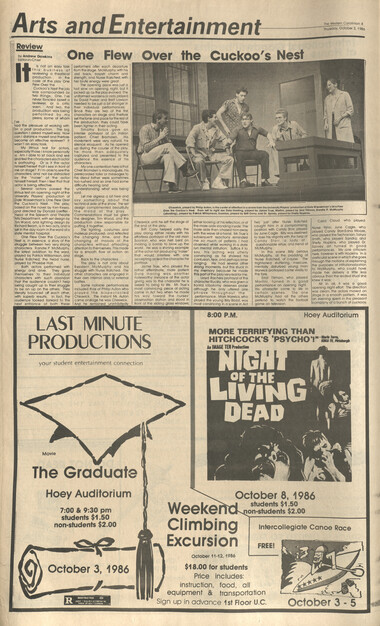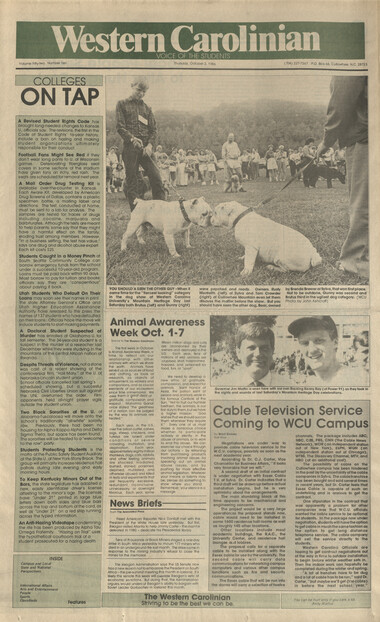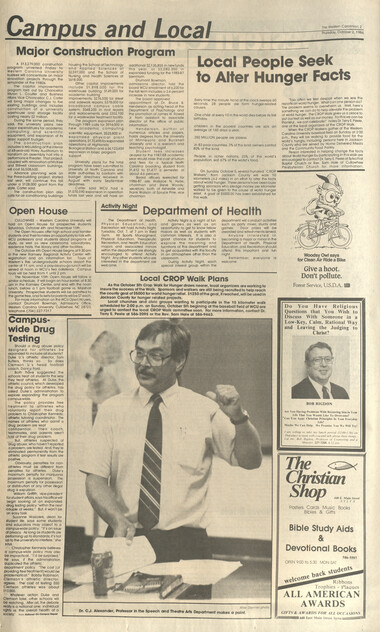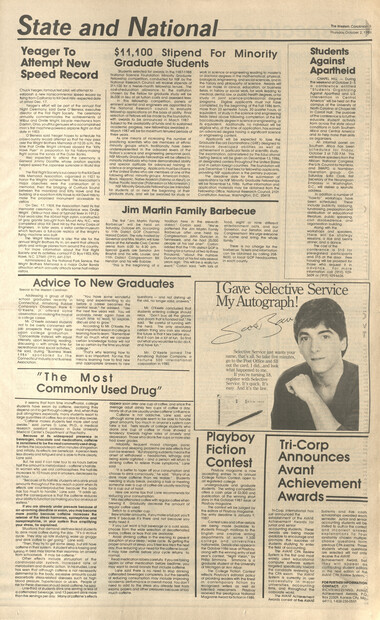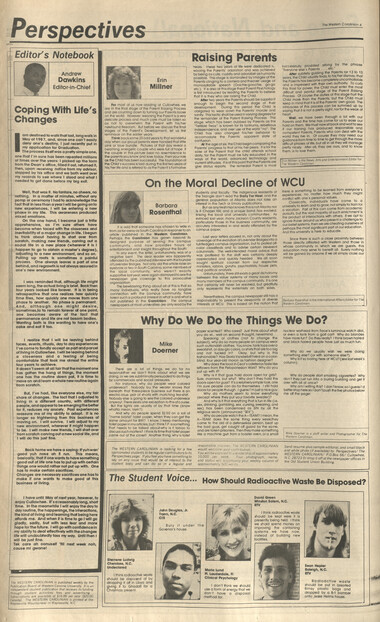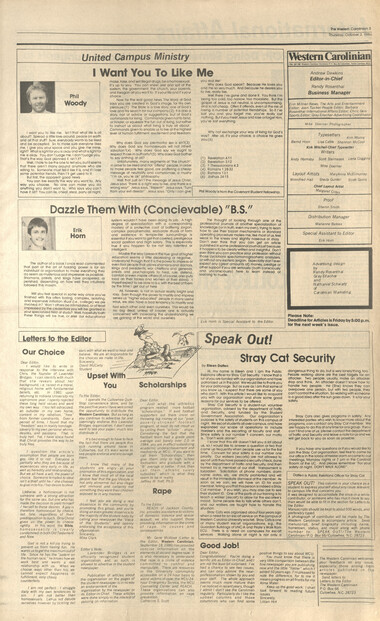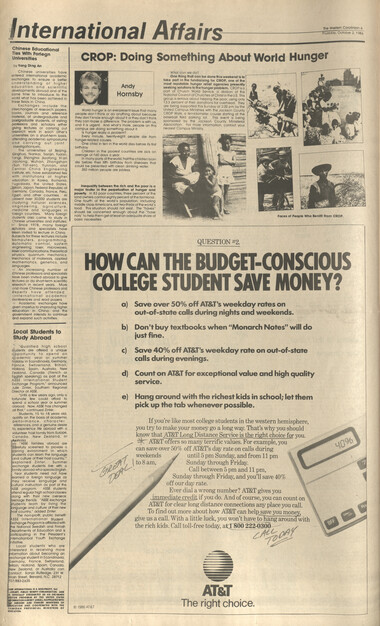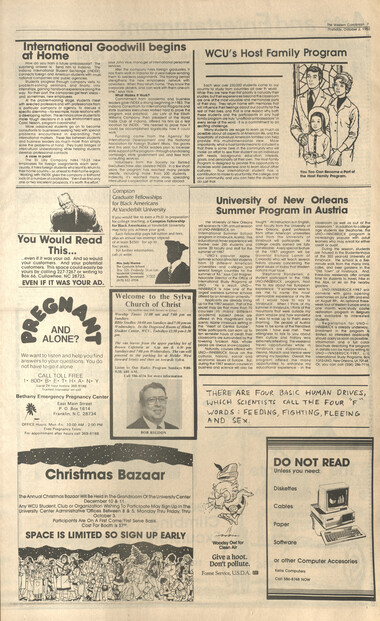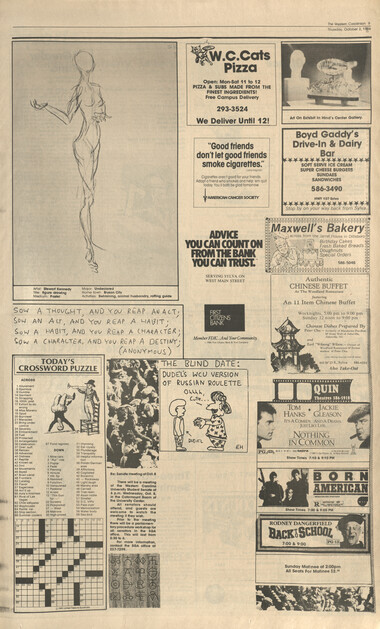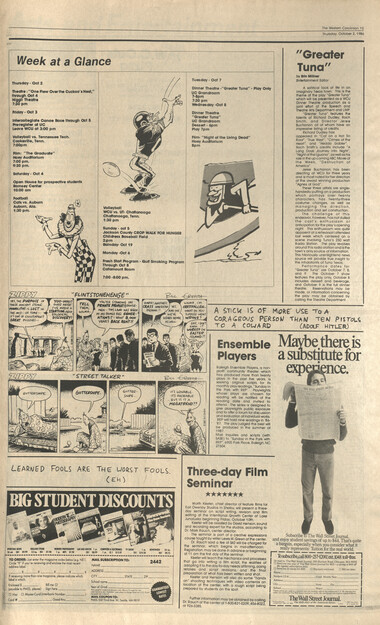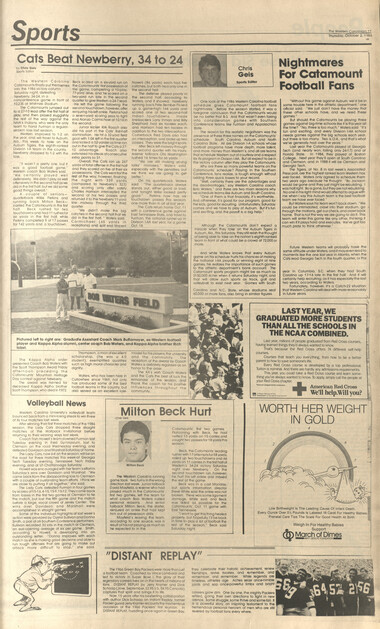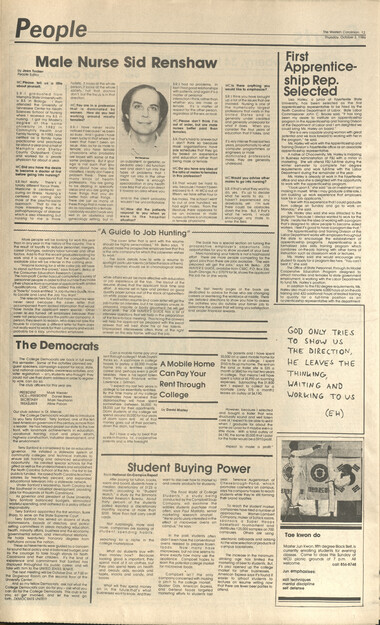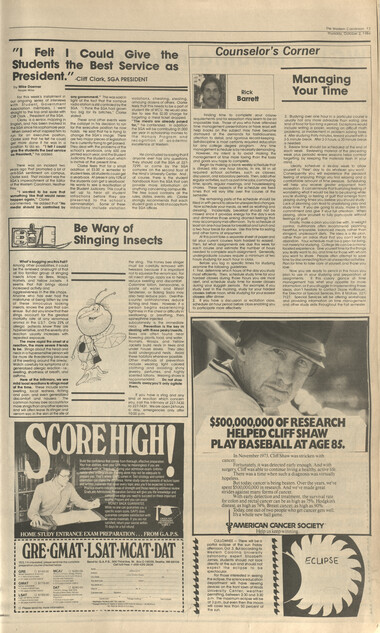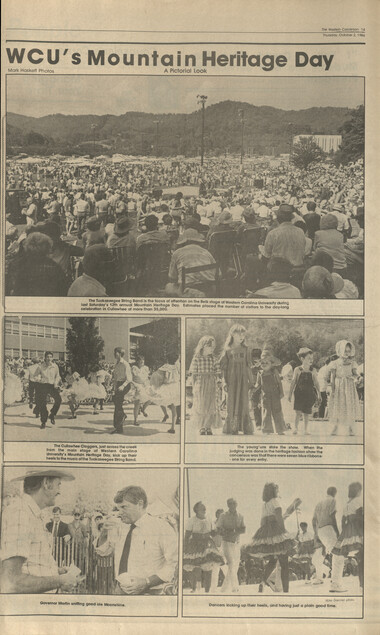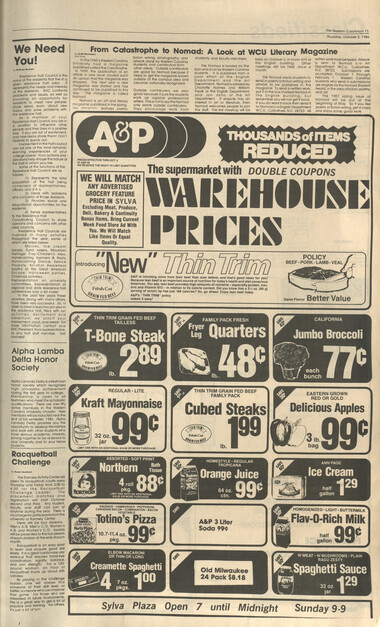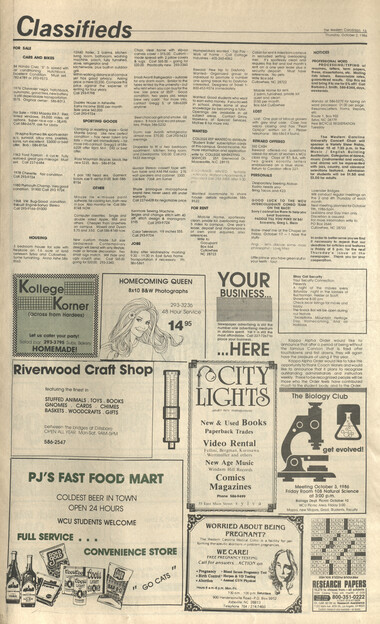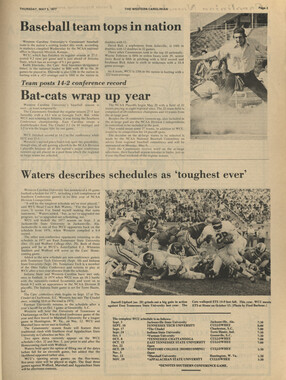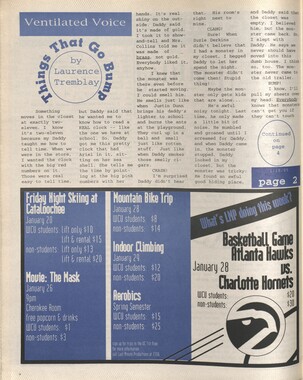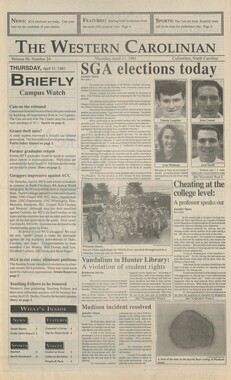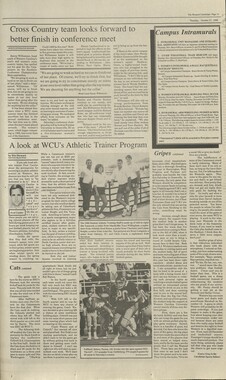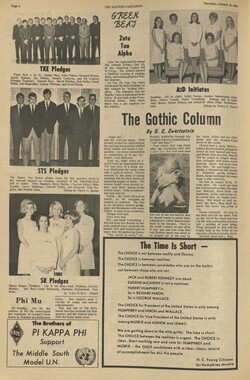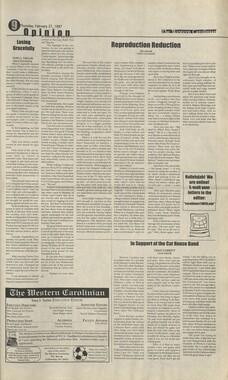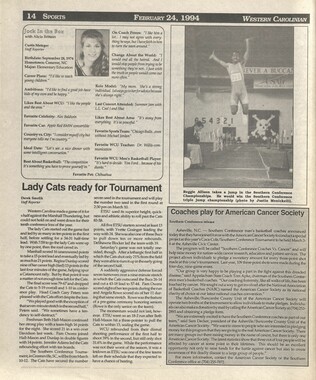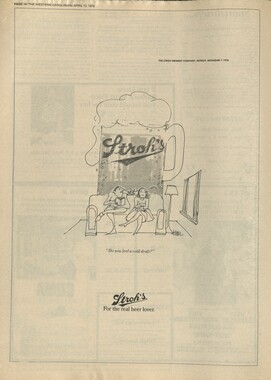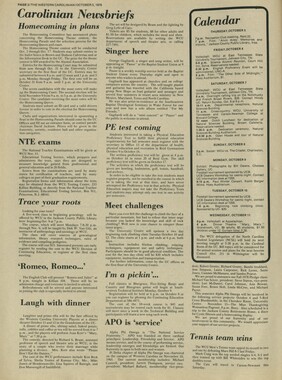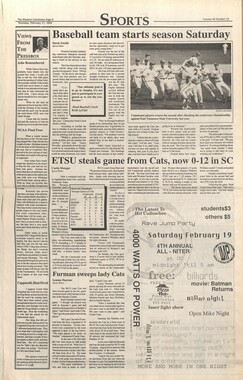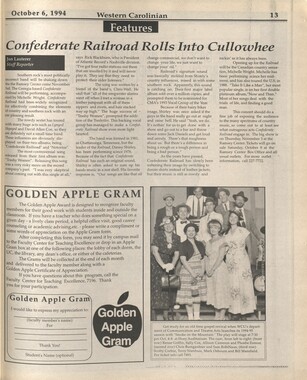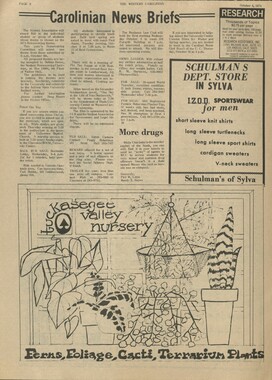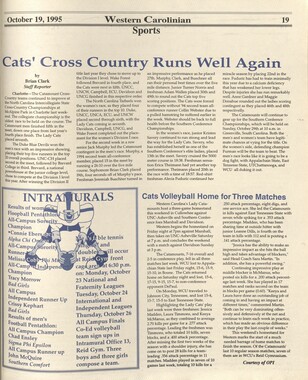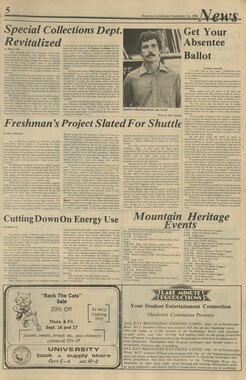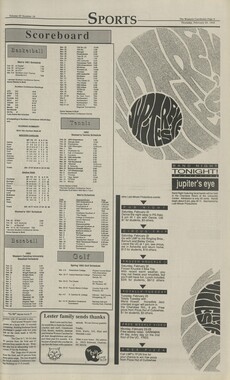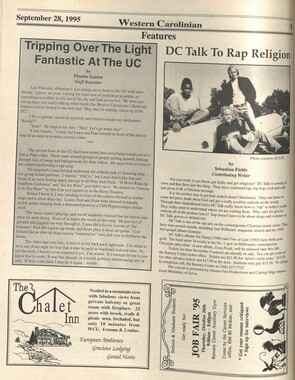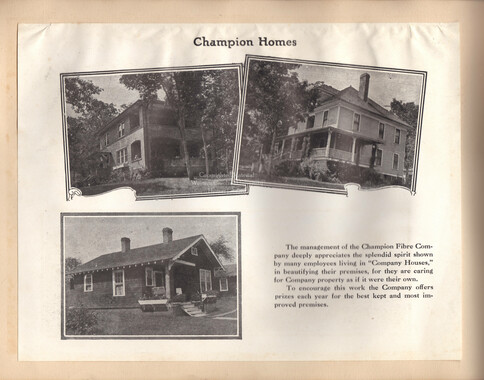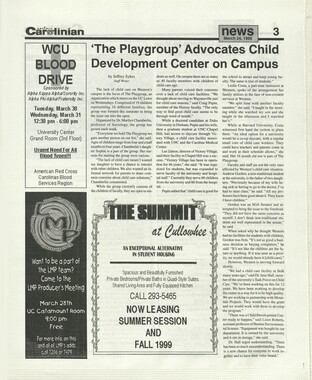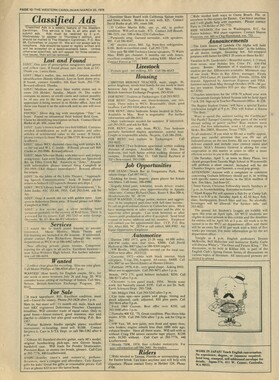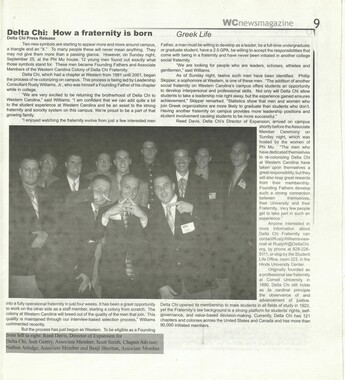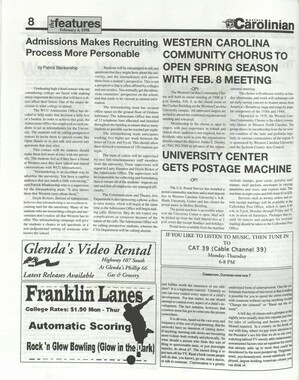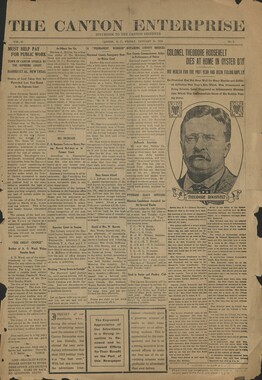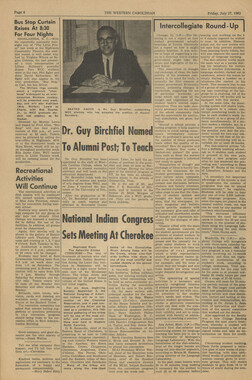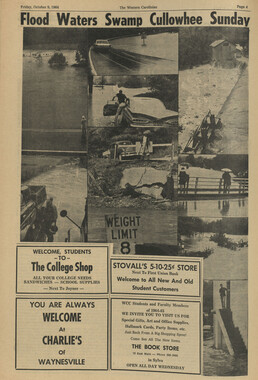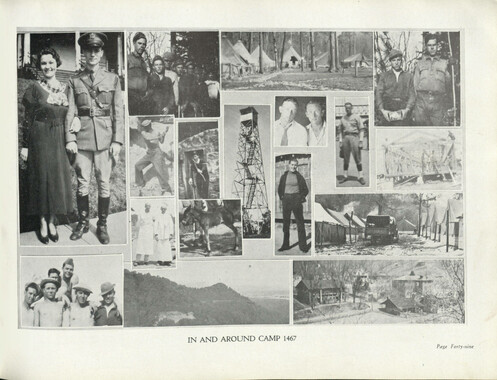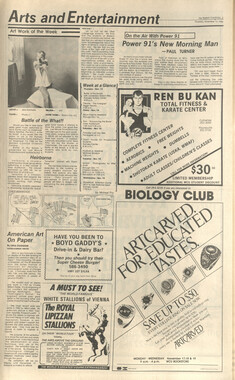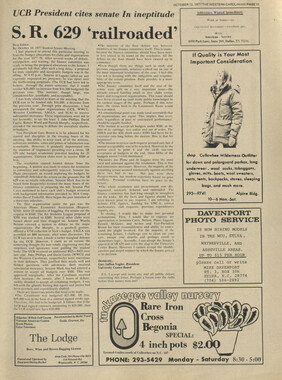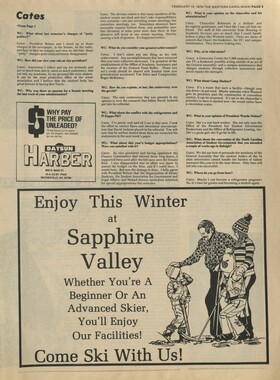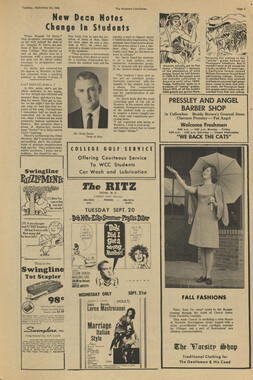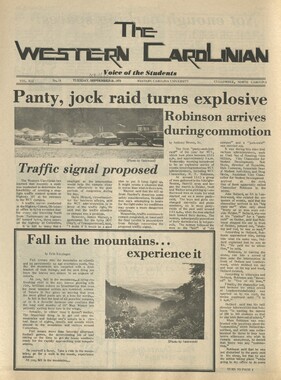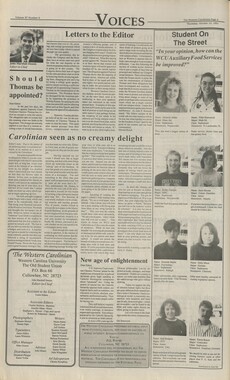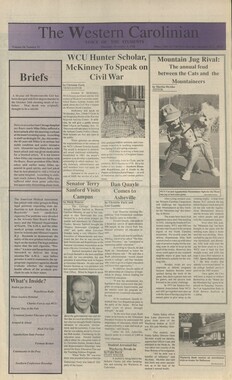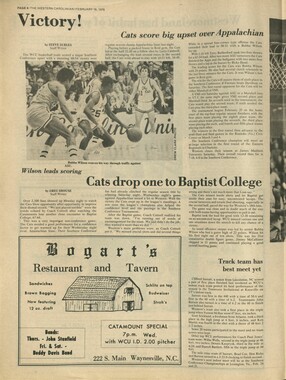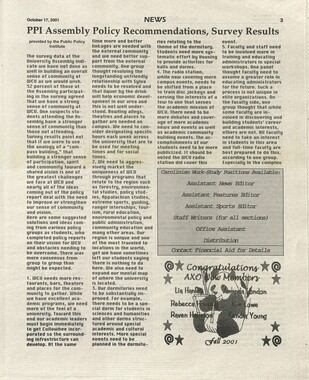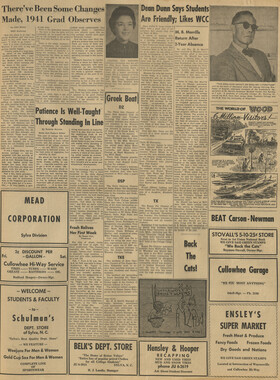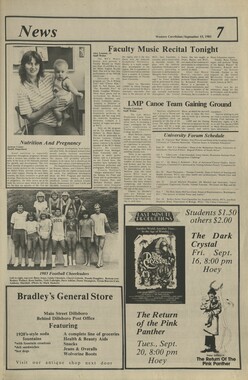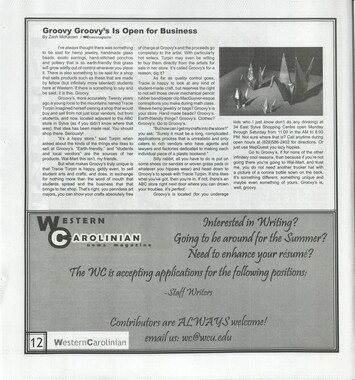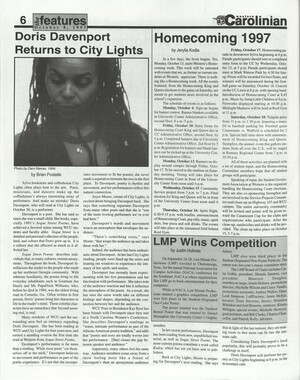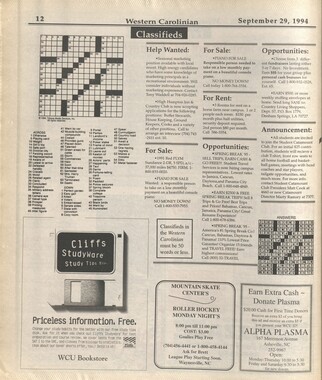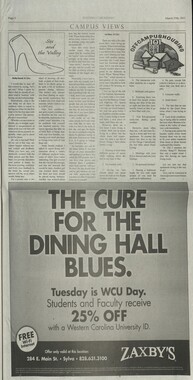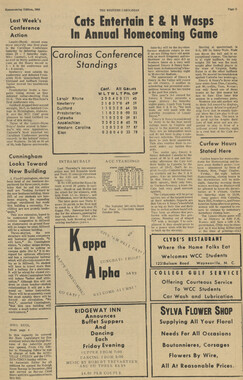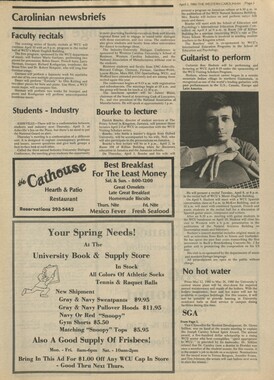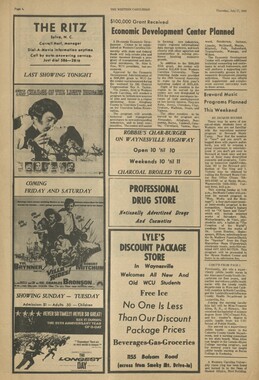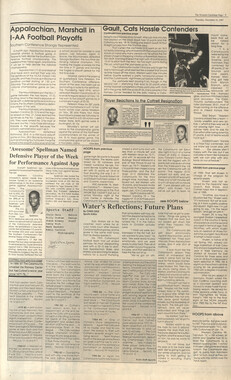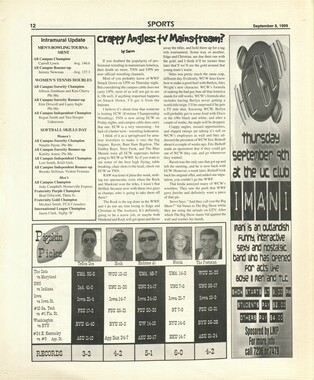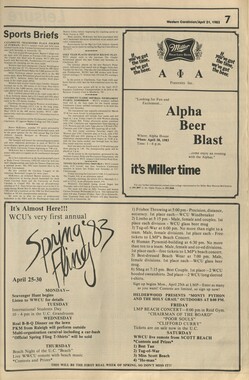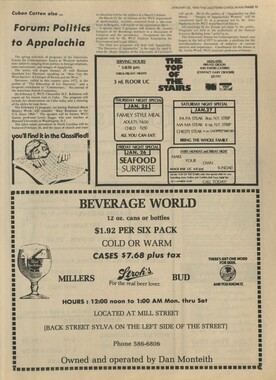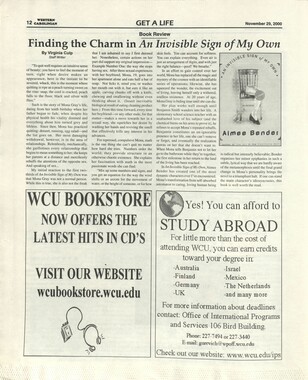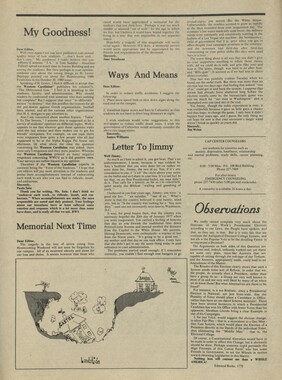Western Carolina University (21)
View all
- Canton Champion Fibre Company (2308)
- Cherokee Traditions (291)
- Civil War in Southern Appalachia (165)
- Craft Revival (1942)
- George Masa Collection (137)
- Great Smoky Mountains - A Park for America (3080)
- Highlights from Western Carolina University (422)
- Horace Kephart (998)
- Journeys Through Jackson (159)
- LGBTQIA+ Archive of Jackson County (89)
- Oral Histories of Western North Carolina (318)
- Picturing Appalachia (6617)
- Stories of Mountain Folk (413)
- Travel Western North Carolina (153)
- Western Carolina University Fine Art Museum Vitreograph Collection (129)
- Western Carolina University Herbarium (92)
- Western Carolina University: Making Memories (738)
- Western Carolina University Publications (2491)
- Western Carolina University Restricted Electronic Theses and Dissertations (146)
- Western North Carolina Regional Maps (71)
- World War II in Southern Appalachia (131)
University of North Carolina Asheville (6)
View all
- Allanstand Cottage Industries (62)
- Appalachian National Park Association (53)
- Bennett, Kelly, 1890-1974 (1463)
- Berry, Walter (76)
- Brasstown Carvers (40)
- Carver, George Washington, 1864?-1943 (26)
- Cathey, Joseph, 1803-1874 (1)
- Champion Fibre Company (233)
- Champion Paper and Fibre Company (297)
- Cherokee Indian Fair Association (16)
- Cherokee Language Program (22)
- Crowe, Amanda (40)
- Edmonston, Thomas Benton, 1842-1907 (7)
- Ensley, A. L. (Abraham Lincoln), 1865-1948 (275)
- Fromer, Irving Rhodes, 1913-1994 (70)
- George Butz (BFS 1907) (46)
- Goodrich, Frances Louisa (120)
- Grant, George Alexander, 1891-1964 (96)
- Heard, Marian Gladys (60)
- Kephart, Calvin, 1883-1969 (15)
- Kephart, Horace, 1862-1931 (313)
- Kephart, Laura, 1862-1954 (91)
- Laney, Gideon Thomas, 1889-1976 (439)
- Masa, George, 1881-1933 (61)
- McElhinney, William Julian, 1896-1953 (44)
- Niggli, Josephina, 1910-1983 (10)
- North Carolina Park Commission (105)
- Osborne, Kezia Stradley (9)
- Owens, Samuel Robert, 1918-1995 (11)
- Penland Weavers and Potters (36)
- Roberts, Vivienne (15)
- Roth, Albert, 1890-1974 (142)
- Schenck, Carl Alwin, 1868-1955 (1)
- Sherrill's Photography Studio (2565)
- Southern Highland Handicraft Guild (127)
- Southern Highlanders, Inc. (71)
- Stalcup, Jesse Bryson (46)
- Stearns, I. K. (213)
- Thompson, James Edward, 1880-1976 (226)
- United States. Indian Arts and Crafts Board (130)
- USFS (683)
- Vance, Zebulon Baird, 1830-1894 (1)
- Weaver, Zebulon, 1872-1948 (58)
- Western Carolina College (230)
- Western Carolina Teachers College (282)
- Western Carolina University (2008)
- Western Carolina University. Mountain Heritage Center (18)
- Whitman, Walt, 1819-1892 (10)
- Wilburn, Hiram Coleman, 1880-1967 (73)
- Williams, Isadora (3)
- Cain, Doreyl Ammons (0)
- Crittenden, Lorraine (0)
- Rhodes, Judy (0)
- Smith, Edward Clark (0)
- Appalachian Region, Southern (3032)
- Asheville (N.C.) (1945)
- Avery County (N.C.) (26)
- Blount County (Tenn.) (195)
- Buncombe County (N.C.) (1680)
- Cherokee County (N.C.) (283)
- Clay County (N.C.) (556)
- Graham County (N.C.) (238)
- Great Smoky Mountains National Park (N.C. and Tenn.) (535)
- Haywood County (N.C.) (3573)
- Henderson County (N.C.) (70)
- Jackson County (N.C.) (4925)
- Knox County (Tenn.) (35)
- Knoxville (Tenn.) (13)
- Lake Santeetlah (N.C.) (10)
- Macon County (N.C.) (421)
- Madison County (N.C.) (216)
- McDowell County (N.C.) (39)
- Mitchell County (N.C.) (135)
- Polk County (N.C.) (35)
- Qualla Boundary (982)
- Rutherford County (N.C.) (78)
- Swain County (N.C.) (2185)
- Transylvania County (N.C.) (270)
- Watauga County (N.C.) (12)
- Waynesville (N.C.) (86)
- Yancey County (N.C.) (72)
- Aerial Photographs (3)
- Aerial Views (60)
- Albums (books) (4)
- Articles (1)
- Artifacts (object Genre) (228)
- Bibliographies (1)
- Biography (general Genre) (2)
- Cards (information Artifacts) (38)
- Clippings (information Artifacts) (193)
- Copybooks (instructional Materials) (3)
- Crafts (art Genres) (622)
- Depictions (visual Works) (21)
- Design Drawings (1)
- Digital Moving Image Formats (2)
- Drawings (visual Works) (185)
- Envelopes (115)
- Exhibitions (events) (1)
- Facsimiles (reproductions) (1)
- Fiction (general Genre) (4)
- Financial Records (12)
- Fliers (printed Matter) (67)
- Glass Plate Negatives (381)
- Guidebooks (2)
- Internegatives (10)
- Interviews (823)
- Land Surveys (102)
- Letters (correspondence) (1070)
- Manuscripts (documents) (618)
- Maps (documents) (177)
- Memorandums (25)
- Minutes (administrative Records) (59)
- Negatives (photographs) (6090)
- Newsletters (1290)
- Newspapers (2)
- Notebooks (8)
- Occupation Currency (1)
- Paintings (visual Works) (1)
- Pen And Ink Drawings (1)
- Periodicals (194)
- Personal Narratives (10)
- Photographs (12977)
- Plans (maps) (1)
- Poetry (6)
- Portraits (4568)
- Postcards (329)
- Programs (documents) (181)
- Publications (documents) (2444)
- Questionnaires (65)
- Relief Prints (26)
- Sayings (literary Genre) (1)
- Scrapbooks (282)
- Sheet Music (2)
- Slides (photographs) (402)
- Songs (musical Compositions) (2)
- Sound Recordings (802)
- Specimens (92)
- Speeches (documents) (18)
- Tintypes (photographs) (8)
- Transcripts (329)
- Text Messages (0)
- A.L. Ensley Collection (275)
- Appalachian Industrial School Records (7)
- Appalachian National Park Association Records (336)
- Axley-Meroney Collection (2)
- Bayard Wootten Photograph Collection (20)
- Bethel Rural Community Organization Collection (7)
- Blumer Collection (5)
- C.W. Slagle Collection (20)
- Canton Area Historical Museum (2110)
- Carlos C. Campbell Collection (462)
- Cataloochee History Project (64)
- Cherokee Studies Collection (4)
- Daisy Dame Photograph Album (5)
- Daniel Boone VI Collection (1)
- Doris Ulmann Photograph Collection (112)
- Elizabeth H. Lasley Collection (1)
- Elizabeth Woolworth Szold Fleharty Collection (4)
- Frank Fry Collection (95)
- George Masa Collection (173)
- Gideon Laney Collection (452)
- Hazel Scarborough Collection (2)
- Hiram C. Wilburn Papers (28)
- Historic Photographs Collection (236)
- Horace Kephart Collection (861)
- Humbard Collection (33)
- Hunter and Weaver Families Collection (1)
- I. D. Blumenthal Collection (4)
- Isadora Williams Collection (4)
- Jesse Bryson Stalcup Collection (47)
- Jim Thompson Collection (224)
- John B. Battle Collection (7)
- John C. Campbell Folk School Records (80)
- John Parris Collection (6)
- Judaculla Rock project (2)
- Kelly Bennett Collection (1482)
- Love Family Papers (11)
- Major Wiley Parris Civil War Letters (3)
- Map Collection (12)
- McFee-Misemer Civil War Letters (34)
- Mountain Heritage Center Collection (4)
- Norburn - Robertson - Thomson Families Collection (44)
- Pauline Hood Collection (7)
- Pre-Guild Collection (2)
- Qualla Arts and Crafts Mutual Collection (12)
- R.A. Romanes Collection (681)
- Rosser H. Taylor Collection (1)
- Samuel Robert Owens Collection (94)
- Sara Madison Collection (144)
- Sherrill Studio Photo Collection (2558)
- Smoky Mountains Hiking Club Collection (616)
- Stories of Mountain Folk - Radio Programs (374)
- The Reporter, Western Carolina University (510)
- Venoy and Elizabeth Reed Collection (16)
- WCU Gender and Sexuality Oral History Project (36)
- WCU Mountain Heritage Center Oral Histories (25)
- WCU Oral History Collection - Mountain People, Mountain Lives (71)
- WCU Students Newspapers Collection (1923)
- Western North Carolina Tomorrow Black Oral History Project (69)
- William Williams Stringfield Collection (2)
- Zebulon Weaver Collection (109)
- African Americans (390)
- Appalachian Trail (35)
- Artisans (521)
- Cherokee art (84)
- Cherokee artists -- North Carolina (10)
- Cherokee language (21)
- Cherokee pottery (101)
- Cherokee women (208)
- Church buildings (190)
- Civilian Conservation Corps (U.S.) (111)
- College student newspapers and periodicals (2012)
- Dams (108)
- Dance (1023)
- Education (222)
- Floods (63)
- Folk music (1015)
- Forced removal, 1813-1903 (2)
- Forest conservation (220)
- Forests and forestry (1198)
- Gender nonconformity (4)
- Great Smoky Mountains National Park (N.C. and Tenn.) (181)
- Hunting (47)
- Landscape photography (25)
- Logging (122)
- Maps (83)
- Mines and mineral resources (9)
- North Carolina -- Maps (18)
- Paper industry (38)
- Postcards (255)
- Pottery (135)
- Railroad trains (72)
- Rural electrification -- North Carolina, Western (3)
- School integration -- Southern States (2)
- Segregation -- North Carolina, Western (5)
- Slavery (5)
- Sports (452)
- Storytelling (243)
- Waterfalls -- Great Smoky Mountains (N.C. and Tenn.) (66)
- Weaving -- Appalachian Region, Southern (280)
- Wood-carving -- Appalachian Region, Southern (328)
- World War, 1939-1945 (174)
Western Carolinian Volume 52 Number 10
Item
Item’s are ‘child’ level descriptions to ‘parent’ objects, (e.g. one page of a whole book).
-
-
Arts and Entertainment The Western Carolinian 8 Thursday, October 2, 1986 Review by Andrew Dawkins Editor-in-Chief One Flew Over the Cuckoo's Nest It is not an easy task this business of reviewing a theatrical production. In the case of the play One Flew Over the Cuckoo's Nest the job was compounded by two things: One, I've never fancied byself a reviewer, or a critic even. And two, the production was being performed by my peers, some of whom I've had the pleasure of working with :on a past production. The big question I asked myself was: How can I distance myself and therfore become an effective reviewer? It wasn't an easy task. My litmus test for actors, especially those I know personally is: Am I able to sit back and see and feel the characters each actor is portraying. Or is it the actor himself/herself that I see in front of me on stage? If i'm able to seethe characters, and not be distracted by the "noise" of the actor himself/herself, then I feel that that actor is being effective. Several actors passed the litmus test on opening night of the University Players' production of Dale Wasserman's One Flew Over the Cuckoo's Nest. The play, based on the novel by Ken Kesey, and directed by Donald Loeffler - Head of the Speech and Theatre Arts Department, with set design by Tim Wood, and lighting design by Richard Beam, is in two acts, and is set in the day room in the ward of a state mental hospital. One Flew Over the Cuckoo's Nest is, in essence, a story of the struggle between two very strong characters: Randle P. McMurphy, the latest addition to the ward, played by Patrick Williamson, and Nurse Ratched, the head nurse, played by Phoebe Hall. Both actors performed with energy and drive. They gave themselves to their individual characters with such abandon that the audience couldn't help being caught up in their struggle to be on up on the others. They literally bounced off each other, with superb results. In fact, the audience looked forward to the next entrance of both these performers after each departure from the stage. McMurphy, with his .aid back, boyish charm and strength, and Nurse Ratched, with her brute energy were great. The opening pace was just a tad slow on opening night, but it picked up as the play evolved. The uniformed wardens or aids, played by David Parker and Brett Lawson needed to be just a bit stronger in their individual performances. Since they are two of the first characters on stage and therfore set the tone and pace for the rest of the production, they could have been tighter in their acting. Timothy Bolick gave an intense portrayal of an Indian patient, Chief Bromden. His movement were very natural, his silence eloquent. As he opened up during the course of the play, he more than adequately captured and presented to the audience the essence of his characters. My one contention here isthat Chief Bromden's monologues, his prerecorded talks or messages to his dead father were sometimes too rushed and so one had some difficulty hearing and understanding what was being said. Let me digress a bit here and say something about the technical side of the show. The set design complimented beautifully the mood of the play. Commendations must be given the designer, Tim Wood, and the production crew responsible for putting it together. The lighting, costumes and makeup produced, and reflected ♦he changing time, and the changing of moods of the characters without attracting attention to themselves. This made for a smooth flow of action on stage. Back to the characters. The play is not only about Resident McMurphy and his struggle with Nurse Ratched. The other characters are engaged in their own internal and/or external battles. Some notable performances included thos of Philip Auton who played the bispectacled Cheswick. The instant Mr. Auton came onstage he was Cheswick. And he remained uninhibitedly Cheswick, played by Philip Auton, is the center ot attention in a scene from the University Players' production of Dale Wasserman's One Flew Over the Cuckoo's Nest. From left to right are Dale Harding, played by Jamie True; Martini, played by Eirol Tillman; Randle P. McMurphy (standing), played by Patrick Williamson; Scanlon, played by Brttt Corry; and Dr. Splvey, played by Shelly Hopkins. Cheswick until he left the stage at the end of the play. Britt Corry helped carry the play along rather nicely with his effortless portrayal of the old man Scanlon who was hell bent on making a bomb to blow up the world. He was a shining example of the actor not producing "noise" that would interfere with one accepting as real the character he portrays. Jamie True, who played the rather effeminate, male patient Dale Haring was another noteworthy instance of the actor giving way to the character he is asked to bring to life. Mr. True's most convincing piece of acting came in Act Two when he made his way toward the nurses' observation station and stood in front of the sliding glass windows, either looking at his reflection, or at the male aide standing inside. The male aide then chased him away with the wave of a hand. Mr. True's subsequent reactions reminded me so much of patients I had observed while working in a state run mental intitution. Suffice it to say, his acting was utterly convincing as he showed his confusion, fear, and perhaps inner longing. He had several other strong moments, but this stuck in my memory because he made this part of the play very real for me. Lloyd Rachels protrayal of the character Ruckly, who was given a frontal labotomy deserves praise although he only uttered one phrase throughout the performance. Mark Warwick, who played the young Billy Bibbit, was most convincing in a scene in Act Two just after Nurse Ratched caught him in a compromising position with Candy Starr, played by June Cagle. Billy was destined to lose his virginity with the help of Candy Starr, a lady of questionable virtue, and friend of McMurphy. In this scene Billy betrays McMurphy, at the prodding of Nurse Ratched, of course. The frightened stuttering, insecure, mentally disturbed young man Warwick protrayed came vividly to the fore. Errol Tillman, who played Martini, turned in a good performance on opening night. His character came to life in certain scenes. The one McMurphy had all the others pretend to watch the football game on television. Carol Cloud, who played Nurse Flinn; June Cagle, who played Candy Starr;Edna Moore, who played the Technician; Tonya Smith, who played Sandra; and Shelly Hopkins, who played Dr. Spivey all turned in good performances. My one criticism here, however is with Hopkins. In a particular scene in which she goes through the motions of explaining the purposes of intitutionalization to McMurphy, who could have made her delivery a little less obvious than the recited ritual she knew it was. All in all, it was a good opening night effort. The direction was clean, the actors moved on .stage in a smooth pattern. It was an evening spent in the pleasant company of a bunch of cuckoos. LAST MINUTE PRODUCTIONS your student entertainment connection 8:00 P.M. Hoey Auditorium MORE TERRIFYING THAN HITCHCOCK'S 'PSYCHO'!" &££% AilltttfTHfodietiMi Movie The Graduate Hoey Auditorium 7:00 & 9:30 pm students $1.50 non-students $2.00 Weeke Climbing Excursion October 8,1986 students $1.50 on-students $2.00 Intercollegiate Canoe Race FREE! RISTXICTtO imtsf <• moji.is »cco«m»>'»g NIIII 0* *0UI' Gu««0i»« October 11-12, 1986 $18.00 for students Price includes: instruction, food, all '* equipment & transportation Sign up in advance 1st Floor U.C. October 3 - 5 I
Object
Object’s are ‘parent’ level descriptions to ‘children’ items, (e.g. a book with pages).
-
The Western Carolinian is Western Carolina University's student-run newspaper. The paper was published as the Cullowhee Yodel from 1924 to 1931 before changing its name to The Western Carolinian in 1933.
-
